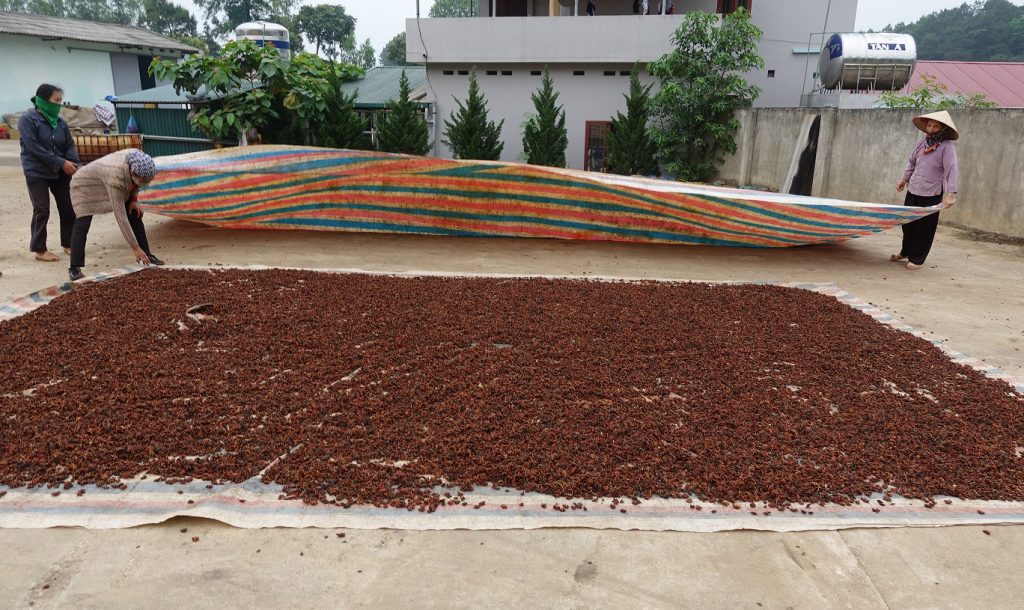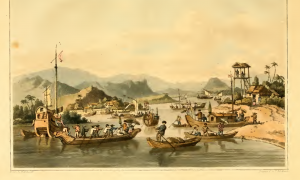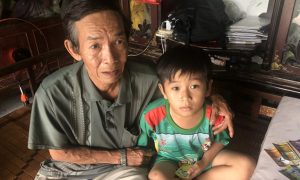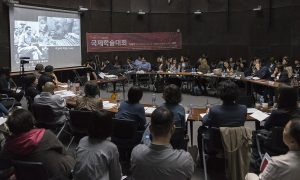Sarah Turner, Annuska Derks and Jean-François Rousseau (eds) 2022. Fragrant Frontier. Global Spice Entanglements from the Sino-Vietnamese Uplands. NIAS Press.
Open Access: https://www.niaspress.dk/book/fragrant-frontier/
Although we frequently find a variety of spices in our kitchen cupboards, their origins and trade routes retain something of a mythical allure. In this book, we work to demystify these roots and the spice trade networks that start in the Sino-Vietnamese uplands. Within this frontier, different ethnic groups are involved in growing black cardamom (Lanxangia tsaoko), star anise (Illicium verum) and ‘cinnamon’ (Cinnamomum cassia, commonly referred to as cinnamon) for local, regional, and global markets.
The production and trade of these three spices have numerous social, cultural, economic, and geographical expressions. Some are centuries old, while others are a result of changing agro-ecological conditions, recent state policies, or innovative trade opportunities. These spices are thus fascinating cases with which to explore the intersections of the lived practices of spice cultivation and production, and the globally expanding market for ‘exotic’ spices.
Our collective book has three objectives: 1) to foreground the experiences of the upland frontier farmers cultivating these spices and the livelihood impacts they are coping with and adapting to; 2) to investigate the diverse actors involved in the commodity chains that move and transform these spices from upland farms to global markets; and 3) to analyse the value-creation tactics that different individuals and companies along these commodity chains employ to trade these spices. We map the flows of these spices and tease out the power imbalances that create advantages and disadvantages for individuals along these global trade routes (see our Story Maps for visualisations of these flows).
Across the Sino-Vietnamese uplands, the ethnic minority farmers at the heart of this collection are primarily building livelihoods at the starting nodes of the commodity chains explored here. The farmers growing black cardamom are most often Hmong (part of the Miao group in China) or Yao (Dao), and to a lesser extent Hani and Yi (Lô Lô in Vietnam). Star anise cultivators are predominantly Nùng or Tày, while Yao and Hmong tend to “cinnamon” trees.
Most of these populations still base their livelihoods around a core staple crop of rice or maize, complemented by produce from home gardens. Spices hence tend to be a complementary cash crop. Yet, agrarian transitions and state-led “development” schemes are increasingly integrating these households into the market economy. While some upland residents are hesitant to change livelihood practices that they have relied upon for generations, others readily adopt new opportunities. The integration of traditional and modern agrarian technologies and practices can nonetheless create cultural and economic dilemmas, many of which become evident in this book.
Conceptually we draw on debates from frontier and borderland studies, rural livelihood literatures, understandings of the agrarian transition, and commodity chain analyses. Each of the book’s chapters draws from these broad conceptual discussions, while also highlighting more specifically relevant conceptual literatures and critiques.
There is both bright and dark sides to Vietnam’s integration into the global economy.
Gains and pain as Vietnam goes global
In Chapter 2, “Vietnam’s star anise commodity chains entangled in flex-crop debates”, Sarah Turner and Annuska Derks note how little is known about who cultivates this spice in the Sino-Vietnamese borderlands and how it reaches consumers around the world. This is despite star anise having multiple usages and hence potential to be considered a “flex crop” due to its role as a key component in the pharmaceutical production of the anti-influenza drug Tamiflu.
To investigate the roles of actors along star anise commodity chains originating in northern Vietnam, we put commodity chain concepts into conversation with “flex crops” debates to reveal the intricate and idiosyncratic nature of the commodity chains upon which cultivator livelihoods depend. As these chains connect uplands and lowlands through numerous linkages, cultivators, intermediaries, wholesalers, exporters, and marketplace traders constantly renegotiate their positions along the chains to maintain viable livelihoods.
For many involved, financial gains fluctuate wildly over time with uncertain financial returns and shifting demands. We find that the segmented knowledge individuals have of these commodity chains keeps many in a vulnerable position. We thus question the effectiveness of the Vietnamese state’s current approach to promoting this commodity as a way to improve local livelihoods.
In Chapter 3, “Cardamom cultivator concerns and state missteps in Vietnam’s northern uplands”, Patrick Slack digs further into the ways that the Vietnamese state attempts to integrate upland ethnic minority farmers into the market economy through rural development initiatives promoting cash- and mono-cropping and agricultural intensification.
Focussing on a Vietnamese upland district directly on the borderline with Yunnan, Slack finds that state upland interventions have also been intersecting with increasing extreme weather events. This potent combination has resulted in notable declines in black cardamom yields. Ethnic minority cardamom cultivators subsequently test, engage with, or ignore state-endorsed alternatives and other opportunities as they see fit, based on their own understandings and experiences of the local agro-ecological context. Despite persistent and intensified state interventions to coax upland farmers to cultivate monocultured cash crops, livelihood portfolios remain diverse.

“Cinnamon” for sale in Hanoi. Image courtesy the authors.
In Chapter 4, “The taste of cinnamon: The making of a specialty product in northern Vietnam”, Annuska Derks, Sarah Turner, and Ngô Thúy Hạnh focus on ethnic minority farmers cultivating what some global retailers refer to as the “champagne of cinnamon” in northern Vietnam’s Yên Bái Province. A closer examination reveals, however, that this spice is not so-called “true cinnamon” but Cassia, with the exact species remaining uncertain.
Derks, Turner, and Ngô investigate the making of “Vietnamese cinnamon” as it moves from the hills of northern Vietnam to supermarket shelves in the Global North. They detail how different actors define “Vietnamese cinnamon” and infuse it with oft-contradictory values. While the state and NGOs tend to ignore ongoing taxonomic confusion, promoting a marketing geographical indication (GI) to highlight the uniqueness of this commodity, advertising strategies in the Global North focus on other distinctions, such as remoteness, ethnicity, taste, and health benefits. Farmers, however, continue to sell an indistinct product on the global market, raising questions regarding how value is created along the Cassia chain, and who benefits.
Crossing the Sino-Vietnamese borderline, in Chapter 5, “Extreme weather events, cardamom livelihoods, and power dynamics in Southwest China”, Jean-François Rousseau and Xu Yiqiang examine the fallout from a series of extreme weather events that decimated black cardamom plantations in Yunnan. The authors investigate how different actors have experienced the impacts of harvest failure and the price spike it drove along the cardamom commodity chains starting in Yunnan.
Building from scholarship spanning vulnerability and livelihood studies to commodity chains literature, Rousseau and Xu highlight how power relations and trust manifest in specific ways at different nodes along the cardamom commodity chains. They explain why some actors along these chains have benefited from the extreme weather events, while others have not.
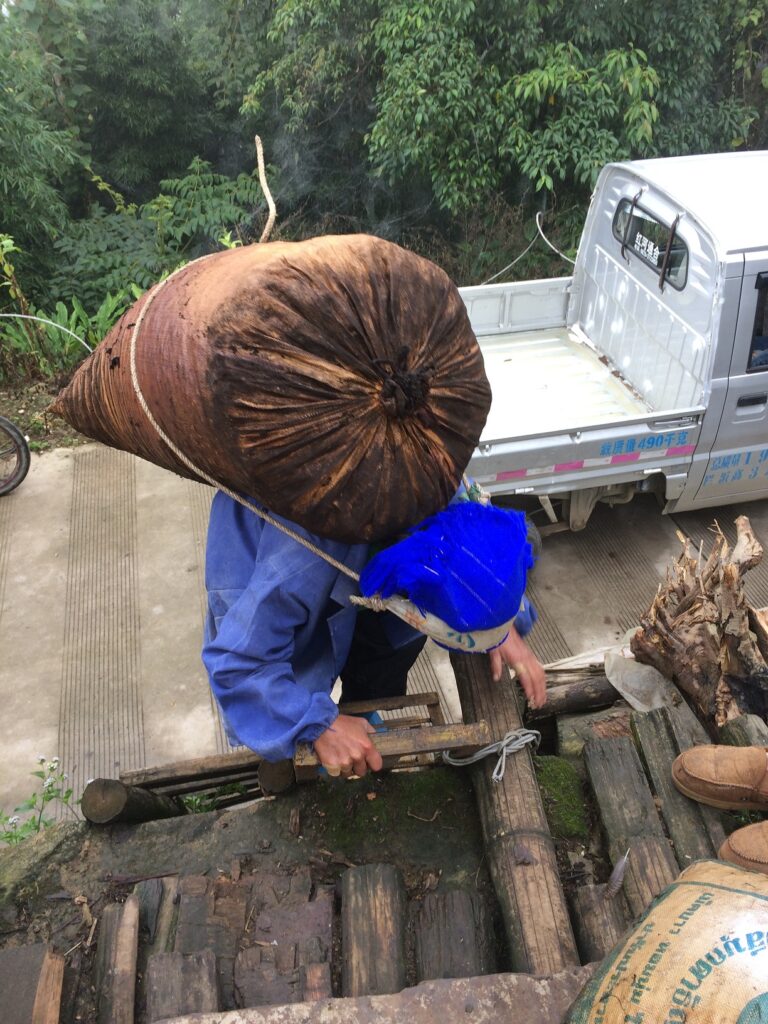
Hani farmer with her dried cardamom, Yunnan, China. Image courtesy the authors.
In Chapter 6, “False promises: Cardamom, cinnamon, and star anise boom-bust cycles in Yunnan, China”, Jennifer Langill and Zuo Zhenting explore the market processes and state campaigns that have driven cardamom, Cassia, and star anise “booms” in China’s Yunnan Province. They find that the surges end as rapidly and abruptly as they begin. The diverse factors involved in the “crop busts” are found to include market failure, climatic events, and inappropriate state-sponsored agrarian techniques. These events create numerous challenges for farmers, who adopt a range of specific livelihood diversification strategies to cope and adapt.
Drawing on “boom-bust” and livelihood scholarships, Langill and Zuo support their analysis with interviews conducted with ethnic minority cultivators and local state officials in Yunnan’s borderlands. They highlight the different vulnerabilities that farmers face and outline the livelihood strategies that farmers take up in response to their “spice bust” experiences.
In Chapter 7, “Marketing makeovers and mismatches of Vietnam’s quintessential spices”, Michelle Kee and Celia Zuberec track how key actors commodify star anise, black cardamom, and “cinnamon” in order to target specific consumer priorities and preferences. Starting their journeys in the Sino-Vietnamese borderlands, these three spices are marketed in ways that at times draw on distorted imaginaries of cultures, places, and histories to entice consumers in the Global North.
Kee and Zuberec reveal the stark contrasts between the realities for ethnic minority farmers, and the way these farmers and their livelihoods are portrayed and marketed by different spice merchants in Asia and beyond. More specifically, the authors demonstrate how attempts by government officials in Vietnam to create geographical indications (GIs) and regional product specialities are largely ignored or dismissed by both Vietnamese exporters and global wholesalers and retailers. These dynamics raise questions as to how governments and NGOs in the Global South can best support local cultivators.
In Chapter 8, “Reflections on fragrant frontier entanglements”, Sango Mahanty briefly contemplates and highlights some of the key conceptual and empirical themes emerging from the collection as a whole. She concludes: “We have here a borderland–frontier in a state of flux, where social and environmental trajectories are diverse, dynamic, and consequential, not least for the ethnic minority communities who inhabit them”. What the future holds for these cultivators and other actors involved in the global entanglements of spices from this fragrant frontier, will be the next chapter of this complex story.
****
You can explore three virtual “StoryMaps” for the spices we focus on here. These visually depict the commodity chains and actors that star anise, black cardamom, and “cinnamon” are entangled with, from upland ethnic minority cultivators in the fragrant frontier of the Sino-Vietnamese uplands to global consumers. They can be viewed at these links:
Star Anise:
https://storymaps.arcgis.com/stories/9ec88b7f62d74ba588561ee7cbf43eba
Black Cardamom:
https://storymaps.arcgis.com/stories/86ccb014eed74ff1a7e4f6deafd0d7f8
“Cinnamon”
https://storymaps.arcgis.com/stories/cb55d2dd5b1f4abdb62a8d18c4f0609b
About the Editors:
Sarah Turner is a Professor of Geography at McGill University. She is a development geographer specializing in ethnic minority livelihoods, agrarian change, and everyday resistance in upland northern Vietnam and southwest China. She also works with street vendors and other members of the mobile informal economy, as well as small-scale entrepreneurs in urban Southeast Asia. She is an editor of the journals Geoforum and Journal of Vietnamese Studies.
Annuska Derks is an Associate Professor and departmental co-director at the University of Zurich. She is a social anthropologist interested in social transformation processes in Southeast Asia, in particular in Vietnam, Cambodia, and Thailand. Her research focuses on migration, labour, gender, as well as the social lives of things, and interrogates discourses of development and innovation.
Jean-François Rousseau is an Associate Professor at the University of Ottawa. He is a development geographer with research focusing on the relationships between agrarian change, infrastructure development – especially hydropower dams and sand-mining – and ethnic minority livelihood diversification in Southwest China.
 Facebook
Facebook  Twitter
Twitter  Soundcloud
Soundcloud  Youtube
Youtube  Rss
Rss 